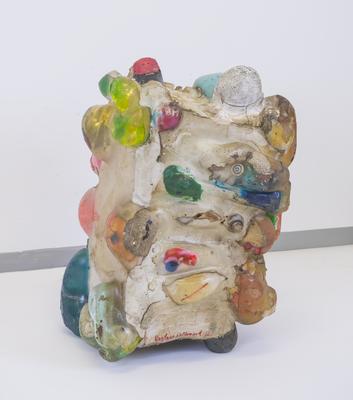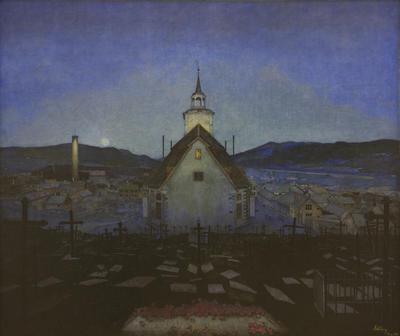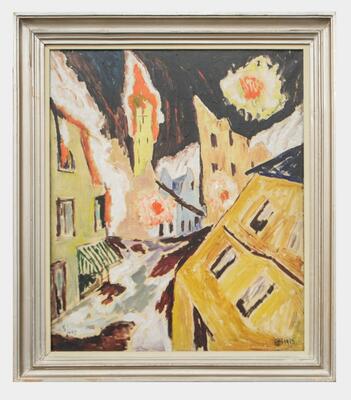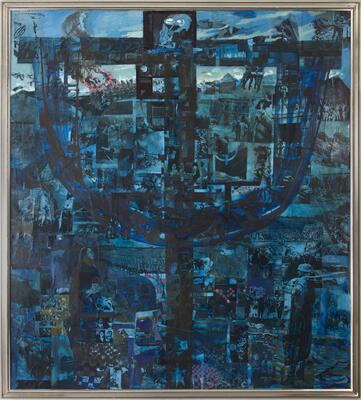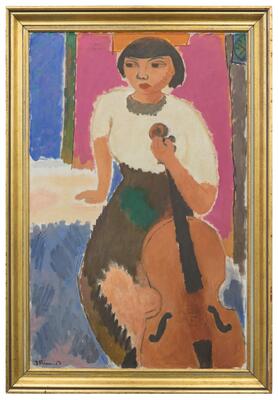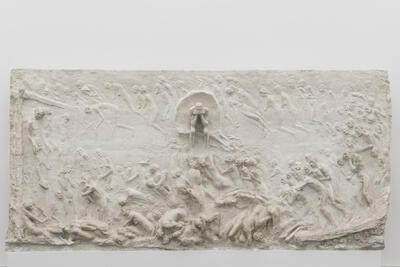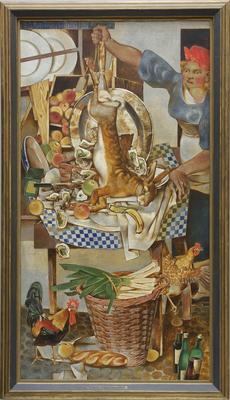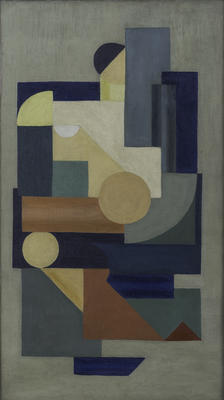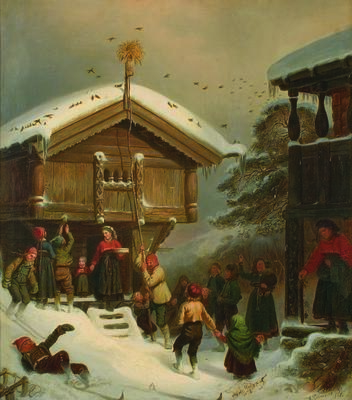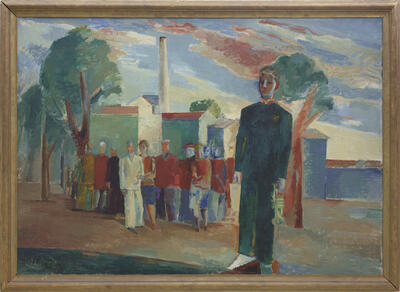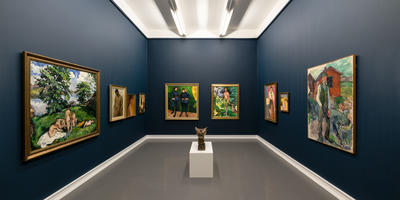- 1/1
Edvard Munch (1863-1944), Portrait of Solicitor Ludvig Meyer, 1892.
Purchased in 1909 from the artist for the contribution of the wine monopoly Brændevinssamlaget.
I know there will be hullabaloo and withdrawals and penny-a-linings. But I have promised myself that I will have it done before I leave my position as chairman of the Kunstforeningen. Furthermore, now I think I will get the majority to vote for the purchase.
In 1909 Edvard Munch’s painting of Solicitor Ludvig Meyer was purchased. As a protest, anonymous members of Trondhjems kunstforening threatened to withdraw their membership. With its diluted reddish background and its broad, vigorous brush strokes the portrait was considered to be unfinished.
Already in 1907 Jens Thiis asked Edvard Munch to send a selection of pictures to Trondheim. This delighted Munch, who had corresponded with Thiis and complained about the lack of interest in his art in Trondheim. In spring 1909 the local newspaper Adresseavisen announced that a Munch exhibition in Kristiania had just ended, and a small selection of works was sent to Trondheim and that the association in advance had obligated itself to buy one of them. The Adresseavisen did not wish to be partial, but the newspaper predicted that this would not come about without a fight. The portrait hung in the Faste Galleri (the permanent gallery) for a whole year before an anonymous response was published in the paper. The writer asked how long the board of directors would continue to abuse the patience of the members, and he insisted the painting be mounted in the same hall as “Helvete” (i.e. Hell) by Gustav Vigeland. That was the last time one could speak of an art battle in Trondheim.
Edvard Munchs portrait of Solicitor Ludvig Meyer was in its time ordered by the solicitor himself. Meyer, who was linked to the progressive milieu surrounding the bohemian circles in Kristiania, possibly found the portrait too radical, refused to accept the result and accused Munch of having delivered an unfinished work. Some time later Meyer asked for a portrait of his children. This commission ended in court, and Munch won the trial when it came up that this was actually how he painted.
Munch often painted people the way they were, how he perceived them, and not necessarily how they themselves preferred to be depicted. The portrait of Solicitor Ludvig Meyer, was painted in a 1:1 ratio and shows a man with low shoulders and his head cocked. The solicitor’s body language expresses a feeling of exhaustion. Munch’s depiction seems to give us a glimpse of Meyer with a lowered guard, lost in thoughts. Meyer, who was once a wealthy man, lost all during a serious property crash in the 1890s. Is the portrait unfinished, or is this Munch’s way of depicting Meyer’s life?




